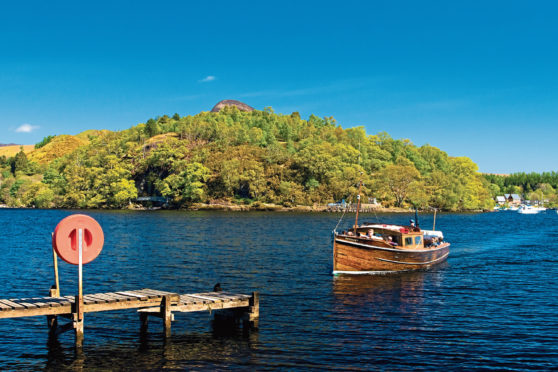
Accessed by an on-demand ferry service from the village of Balmaha, Inchcailloch sits 500 metres (1,640 feet) out on Loch Lomond.
When on the island, firm paths allow easy exploration along the central valley and the western shore.
One of the best times to visit is during May when the bluebells are breathtaking. Port Bawn, with its marvellous sandy beach, is also a great spot for a picnic.
Inchcailloch translates from Gaelic as “island of the old woman” and is thought to have been named after the Irish St Kentigerna, who established a Christian community there during the 8th Century.
Perhaps the island’s most intriguing location is Inchcailloch Burial Ground – the traditional burial ground of Clan MacGregor, which occupied lands northeast of Loch Lomond.
Many of Clan MacFarlane, who held lands to the north-west, are also buried here.
Some of the oldest stones date from between the 13th and 17th Centuries, one of which is the final resting place of Gregor MacGregor, clan chief and cousin of Rob Roy.
The highest point of Inchcailloch rises to 85 metres (279 feet). From here, an outstanding view extends across Loch Lomond to the island of Inchfad, the Luss Hills, Arrochar Alps, Ben Lomond and Conic Hill.
Factfile
Since the reign of Robert the Bruce, Inchcailloch has been used as a hunting forest.
The island was farmed until the early 19th Century, being recorded in 1800 as producing good wheat and oats. The ruins of the farm can still be seen. For around 130 years, Inchcailloch was an oak plantation.
The resulting timber was processed at Balmaha (on the site of the Highland Way Inn), for making wood vinegar (pyroligneous acid), wood tar, and dye.

Enjoy the convenience of having The Sunday Post delivered as a digital ePaper straight to your smartphone, tablet or computer.
Subscribe for only £5.49 a month and enjoy all the benefits of the printed paper as a digital replica.
Subscribe